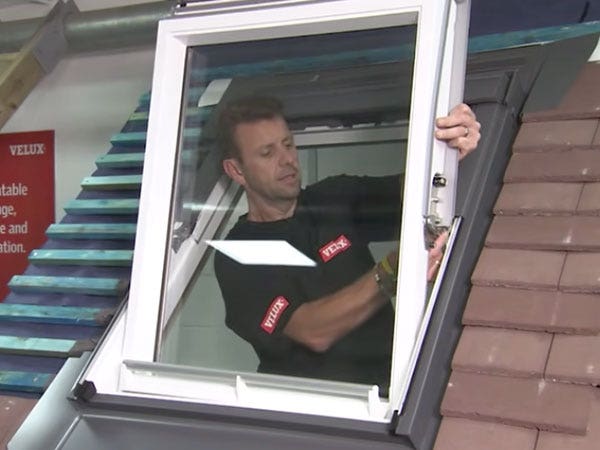Replacing your roof is one of the most significant home maintenance projects you'll undertake. Timing this project correctly can make all the difference to results, costs and overall hassle. The season you choose affects everything from material performance to contractor availability, and getting it right means a smoother project with better longevity. For homeowners planning this essential upgrade, understanding the seasonal advantages can help you make informed decisions that protect your home for years to come.
Why Timing Matters for Roof Replacement
Weather Conditions Affect Installation
Weather directly impacts how well your new roof performs. Temperature fluctuations, rainfall and humidity levels all play a part in how roofing materials behave during and after installation. Most roofing materials need specific temperature ranges to seal properly. Too cold and shingles may not adhere correctly; too hot and they might become overly pliable and susceptible to damage during installation.
Consistent weather patterns give roofers the stable conditions they need to complete your project without interruption. Unexpected rain can cause damage to exposed areas of your home, while strong winds might compromise safety and installation quality.
Cost and Availability Factors
Roofing costs fluctuate throughout the year based on demand. Peak seasons often come with premium pricing, while off-peak times might offer substantial savings. You'll typically find better rates during slower periods when contractors are eager for work. Additionally, material costs can vary seasonally due to manufacturing cycles and supply chain patterns.
Availability is another key consideration. During busy seasons, you might wait weeks or even months to secure a reputable contractor. Off-peak timing gives you more flexibility and often means faster project completion. This timing advantage allows you to be more selective with your contractor choice rather than settling for whoever has availability.
And when it comes to how often you need to replace roofs, that’s a different question altogether - take a look at our blog on the topic for more details!
Roof Replacement by Season – Pros and Cons
Spring (March to May)
Spring offers moderate temperatures that facilitate proper sealing and adhesion of roofing materials. The mild weather conditions create an ideal environment for installation, with less risk of extreme heat or cold affecting materials.
However, spring showers can cause unexpected delays. The unpredictable rainfall patterns might extend your project timeline as roofers wait for dry conditions. Additionally, many homeowners schedule roofing projects in spring, making it difficult to book preferred contractors without planning well ahead.
Summer (June to August)
Summer provides longer daylight hours, allowing crews to work extended days and potentially complete your project more quickly. The consistently dry weather in many parts of the UK minimises the risk of moisture-related installation problems.
The drawback is that extreme heat can make shingles soft and more vulnerable to damage during installation. Working conditions can also be challenging for roofers, potentially affecting workmanship. Summer represents peak season for most roofing companies, resulting in higher prices and limited contractor availability.
Autumn (September to November)
Autumn brings ideal temperature conditions for roof installation. The moderate weather helps roofing materials set properly while providing comfortable working conditions for contractors. We can confirm for a fact that our long-lasting choices for pitched roofing perform exceptionally well when installed during autumn months.
This season allows newly installed roofing to weather appropriately before winter's harsh conditions arrive. The timing gives your roof a chance to properly seal and settle before facing snow, ice and freezing temperatures.
The main drawback is that autumn is often the busiest season for roofing contractors, so you'll need to book well in advance. As winter approaches, unexpected early cold snaps might interfere with completion timelines.
Winter (December to February)
Winter typically offers the lowest pricing and best contractor availability. With fewer projects on their schedule, many roofing companies offer competitive rates to maintain business during slower months. You might secure significant discounts compared to peak season pricing.
The challenges are substantial, however. Cold temperatures can make certain roofing materials brittle and difficult to work with. Proper sealing might be compromised in freezing conditions, and snow or ice can create safety hazards and project delays. Some roofing adhesives and sealants require minimum temperatures to cure properly, making winter installations technically challenging.
Factors to Consider Before Scheduling a Roof Replacement

Urgency of Repairs
If your roof is actively leaking or severely damaged, immediate replacement might be necessary regardless of season. Postponing essential repairs can lead to structural damage, mould growth and increased repair costs.
When safety is at risk, seasonal considerations become secondary. A compromised roof threatens your home's structural integrity and your family's wellbeing, making immediate action necessary regardless of timing preferences.
Type of Roofing Material
Different roofing materials have unique installation requirements. Asphalt shingles need warm temperatures to seal properly, while metal roofing can be installed in a wider range of conditions. Clay or concrete tiles might have specific temperature needs to prevent cracking during installation.
Your chosen material might narrow down your optimal installation window. Consult with roofing specialists about the specific requirements for your preferred roofing system.
Contractor Availability
Quality contractors often book months in advance, especially during peak seasons. Planning ahead gives you access to the best professionals rather than settling for whoever has immediate availability.
When selecting contractors, balance timing preferences with contractor quality. Sometimes waiting for a reputable company is worthwhile even if it means delaying your project slightly.
Tips for Planning Your Roof Replacement
Start researching contractors 3-6 months before your ideal installation season. This timeline gives you ample opportunity to collect quotes, check references and secure a spot on their schedule.
Consider booking your project during shoulder seasons (late spring or early autumn) to balance optimal weather conditions with better availability and potentially lower costs.
Have a contingency plan for weather delays. Even the best-planned projects can face unexpected setbacks, so build flexibility into your timeline.
Prepare your property for the project by clearing access points, protecting landscaping and removing valuable items from your attic. These preparations help the project proceed smoothly regardless of season.
Final Thoughts
While autumn typically offers the best overall conditions for roof replacement in the UK, your specific circumstances might point to a different season. Balancing weather conditions, contractor availability, costs and personal timing needs will lead you to the right decision.
Remember that a quality contractor can work effectively in less-than-ideal conditions, so prioritising workmanship over perfect timing often yields better long-term results. Whenever you decide to replace your roof, thorough research and proper planning remain the most important factors for project success.






